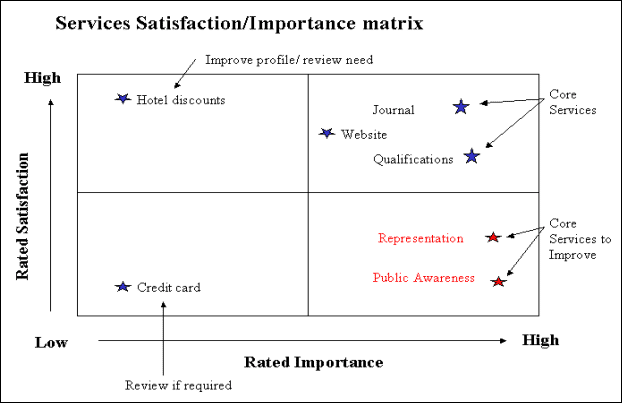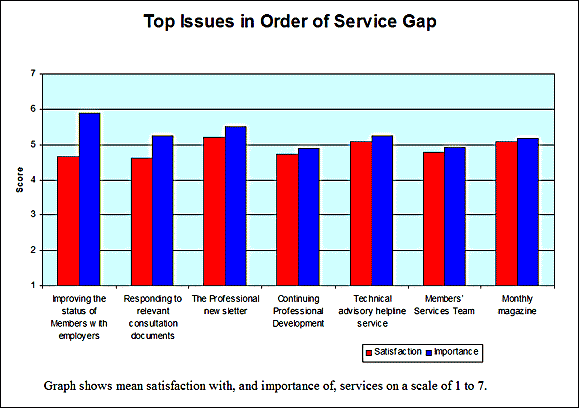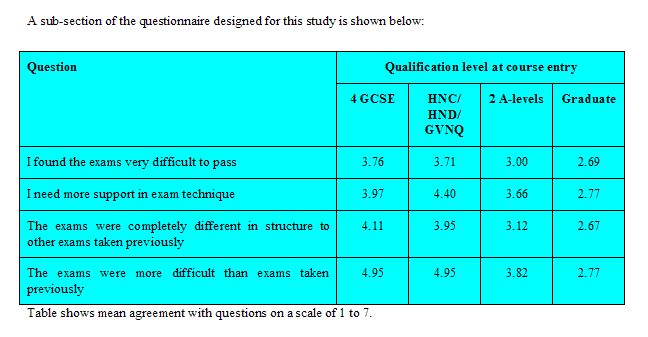Membership Study 1: Membership Satisfaction Analysis
A membership body we worked with wanted to know which services they should focus their efforts into improving. We analysed their members' ratings for how important services were and how satisfied they were with these services. We took the findings of the service gap analysis and used the data to construct a matrix model of their membership services.
This provided them with a model of their service offering, analysed in terms of satisfaction and importance to members. It provided the project team with a clear road map of which services required review and improvement.
Conclusion: The team was able to identify and prioritise which core services required the most attention in terms of service improvement.
We used a series of brainstorming sessions to identify strategies to improve services that had high importance but low member satisfaction. We then helped the client to evaluate these options to determine which strategies to pursue.

Membership Study 2: Membership Satisfaction Analysis
A membership body we worked with wanted to know what their members thought were important services and how satisfied they were with these services. The research identified a particular need to improve professional recognition with members' employers. The members, in common with many member bodies, have a desire for their qualifications and memberships to be recognised more fully by their employers.
This recognition was perceived by members to translate into higher salaries and greater roles and responsibilities at their workplace.
Conclusion: The client used the research, in combination with research into the employers' needs, to address and implement a re-vitalised communications strategy with their members' employers.
The following graph is a sample of the customer requirements and satisfaction analysis that resulted from this study.

Membership Study 3: Student Exam Success and Government Funding
A membership client wished to maintain the level of governmental funding it received for its student courses. There had been a concern that the number of students failing the courses had been too high and that funding may be affected. Research was required to determine why exam failure might have occurred. Clarient Research compared the way in which a number of other membership bodies run their study courses and how this translates into student turnover.
A member survey questionnaire was developed that asked members and students to state where they required more support to pass their exams and identified a number of key factors that would assist students with passing their exams. New ideas and best practices for exam support were also identified in the comparison with other member bodies.
Conclusion: The information provided by the research was presented to Government funders and helped the client to retain Government funding levels.
A sub-section of the questionnaire designed for this study is available:


